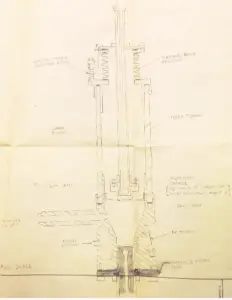The following post has been submitted by GiveaDogaBone
Q: What is it I now believe we know that Sternglass[1:] did not know in 1951?
A: The anode DC current has to be fixed at the bias level that allows NDR(negative differential resistance) to operate. NDR operation requires the anode plasma fireball[2:] to be extent. Once the AC current, light and RF emissions are oscillating due to the pulsating fireball, progress will be made.
Sternglass’s neutrons (without Lithium6 neutron induced fission) seed the LENR reaction in Rossi’s QX. The neutron flux then has to rise to provide net 20W of Li6 fission. At that point basic fission reactor neutron flux control theory takes over; the most important things being negative coefficients of reactivity in respect of temperature and neutron flux density.
[1:] “Synthesis of Neutrons from Hydrogen: The Conclusive Proof of LENR” by Max Formitchev-Zamilof https://www.researchgate.net/profile/Max_Fomitchev-Zamilov/publication/288002944_Synthesis_of_Neutrons_from_Hydrogen_The_Conclusive_Proof_of_LENR/links/567d5bad08ae1e63f1e5fff2/Synthesis-of-Neutrons-from-Hydrogen-The-Conclusive-Proof-of-LENR.pdfSternglass discovered that he could synthesize neutrons via 20-35kV arcs in hydrogen-filled X-ray tubes
Ithaca, N.Y. August 26th, 1951 518 Dryden Rd.
Dear Professor Einstein,
You may be interested to learn that in the course of the past two months I have been able to obtain experimental evidence for the formation of neutrons from protons and electrons in a high-voltage hydrogen discharge.
The experiments were carried out with a demountable gas X-ray tube capable of dissipating 1,200 watts filled with hydrogen and surrounded by about 6 inches of paraffin on all sides. Voltages up to 35 kV and currents up to 40 mA were used and silver and indium foils were placed near the tube walls. The neutron induced beta-activities were measured with a thin-walled aluminum Geiger-Muller counter in a lead housing of about 3-4” thickness giving a background count of 15 counts per minute. The initial activities in indium and silver were found to be 6- 7 counts above background, decaying with the respective mean lives of 2.4 min for Ag and 54 min. for In. Having a standard neutron source, this arrangement could be calibrated roughly so that the rate of neutron formation can be determined to be on the order of 10-20 neutrons/sec at 38 mA and 25 kV and an estimated pressure of 10-2 mm of mercury in the discharge.
…
I remain sincerely yours,
Ernest J. Sternglass
Fig. 3. Sternglass’ X-ray tube used in the neutron synthesis experiment



